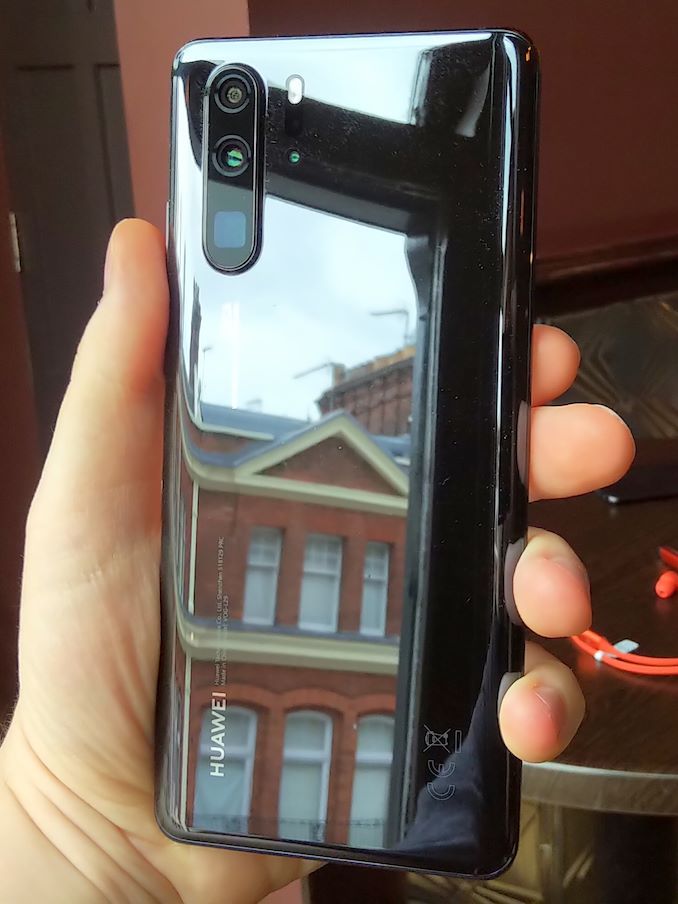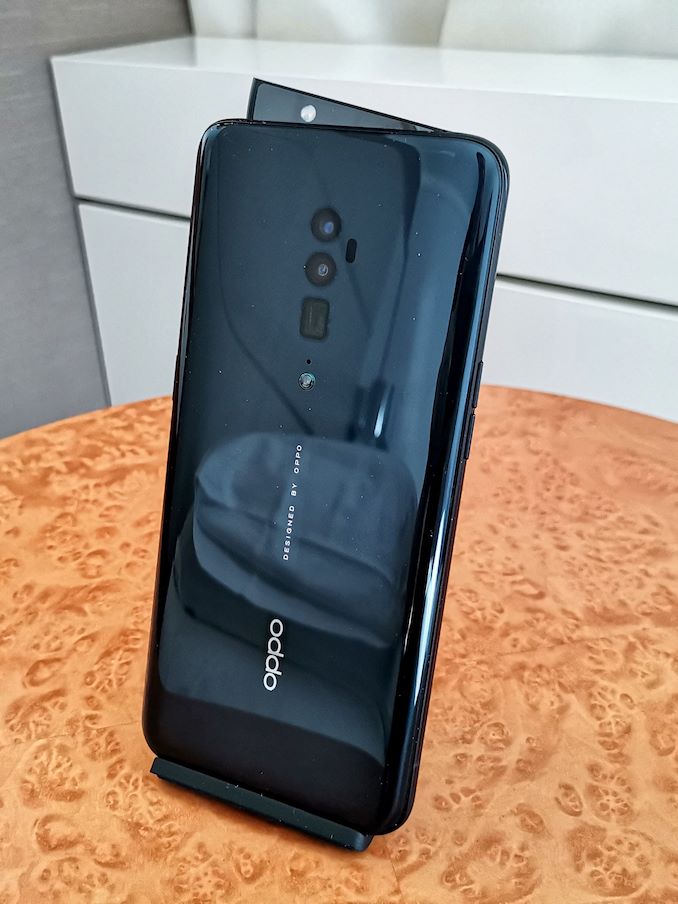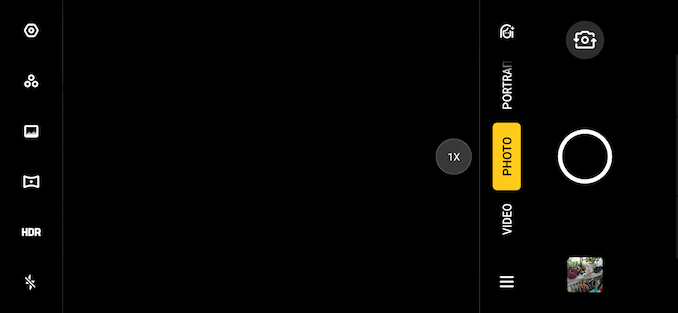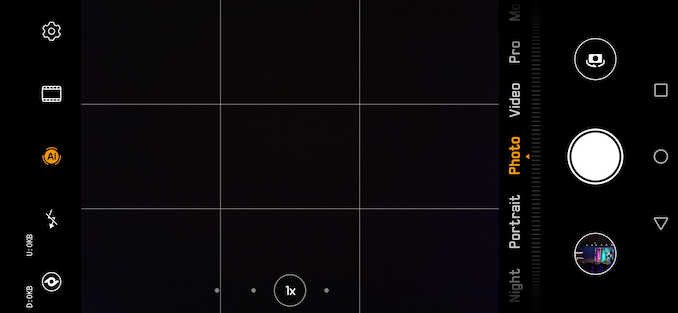Zoom Zoom: Testing 10x Hybrid Zoom in Dublin with the Huawei P30 Pro and Oppo Reno 10x Zoom
by Ian Cutress on May 22, 2019 10:30 AM EST
One of the main issues facing the smartphone industry is stagnation. From generation to generation, we see the main smartphone manufacturers gunning for differentiation, and we’ve seen features such as multiple cameras, all-screen displays, and in-screen fingerprint readers become widespread among the high-end devices in the past couple of years. One of the most recent features available on a couple of new smartphones is a strong zoom, up to 5x/6x optical zoom paired with software to offer a 10x ‘lossless hybrid’ zoom and up to a 50x digital zoom. We recently got ahold of the Huawei P30 Pro and the Oppo Reno 10x Zoom for a quick showdown, given that these are the first devices to both offer this new feature.
Get Perpendicular: Mounting a New Camera
Offering zoom on a smartphone has been a difficult process. In order to enable zoom that can focus over a wide range of distances, the camera needs a sizable distance between the front lens and the camera sensor, however smartphones only offer a limited amount of z-height in order to do so. During the early part of this decade, one of the key metrics for smartphones was z-height (or thickness), and there has been a continual driving force to making a smartphone as thin as possible.
We’ve seen smartphones with these slim designs offering a mild 2x or 3x optical zoom, often with camera modules and lens that stick out of the back of the device, resulting in a non-flush rear. These basic zoom offerings were obviously launched to a big fanfare: they were differentiating at the time. But in order to go further, smartphone manufacturers have had to get sideways.

Huawei's angled lens allows for a deeper camera mechanism
Both of the zoom cameras on the Huawei P30 Pro and Oppo Reno 10x Zoom follow the same philosophy – rather than let the light into the lenses and straight to the camera module, the light enters and hits a prism, directing the light at right angles to the entry point. This allows for a longer camera module, increasing the potential zoom of the camera.
Of course, it isn’t as simple as just adding a prism and manipulating the lenses. There are other considerations when it comes to stabilization – the lens and prisms are now moving in different planes to regular smartphone cameras, and stabilization motors need to be applied differently. In the case of Oppo, we were told that it’s actually the prism that matters the most, while Huawei may do something similar, but both devices offer OIS (optical image stabilization) on the zoom camera as well as AI-enhanced stabilization using either the Snapdragon 855 AI Engine (Oppo) or the Kirin 980 NPU (Huawei).
Oppo are keen to promote the story behind its zoom camera, working with a specialist company in order to do so. That company, since the launch of the Reno 10x Zoom, has since been acquired by Sony, making this an interesting development onto whether Oppo will offer something similar in the future. That being said, the Reno 10x Zoom offers a 6x optical zoom, with up to 10x hybrid zoom, while the Huawei only offers a 5x optical zoom, with up to 10x hybrid.
Optical vs. Hybrid vs. Digital
On smartphone cameras, especially zoom ones, there are three different types of zoom to consider: Optical, Hybrid, and Digital. Optical zoom is the natural zoom capabilities of the camera module, and depending on the module it might offer ‘1x and 5x’ optical zoom or ‘1x to 5x’ optical zoom. The difference between these two depends if the lenses can move – if the lens can move, then the optical zoom is a continuous range, otherwise it is only at the two fixed points.
Hybrid zoom, which can be described as ‘lossless hybrid zoom’, is a mixture of hardware and software based zoom. The device aims to offer a full resolution image, however software (possibly AI) algorithms are applied beyond the natural optical zoom of the camera module in order to provide a natural image at a higher zoom. Ultimately the better the natural optical zoom of the camera, and the better the software, the better the hybrid zoom.


Huawei P30 Pro vs Oppo Reno 10x Zoom
Digital zoom, by contrast to all of the above, is a crop of an optical image – it is a faux zoom that just results in a lower resolution image to give a sense of ‘zoom’.
So the Huawei P30 Pro offers a 1x to 5x optical zoom, a 5x to 10x lossless hybrid zoom, and a 50x digital zoom. The Oppo Reno 10x Zoom offers a 1x and 6x optical zoom, a 6x to 10x hybrid zoom, and a 30x digital zoom.
This Test
In this photo comparison, I had access to a retail version of the Huawei P30 Pro (build 9.1.148) and a pre-production model of the Chinese version of the Oppo Reno 10x Zoom (), which I must stress has non-final software. These devices play in different price brackets: the P30 Pro is an $1100 device, aiming at the high-end premium of the market, whereas the Oppo Reno 10x Zoom in the same configuration is an $850 model. The Oppo Reno also has a full screen display, and the ‘pizza slice’ pop-up selfie camera, which if it were a notched phone like the Huawei would actually make it a little bit cheaper. I had the two devices over a long weekend break in Dublin, so I used the opportunity to take a series of comparison shots.
How the test was performed involved using the standard settings in the camera app, with AI enabled (as would normally be the case). The differences between the two devices come down to the automatic zoom presets. On each interface, there is a small bubble saying ‘1x’, indicating the zoom. Users can either hold this button down, and fine tune the levels of zoom, or press it once to cycle through the zoom presets. Unfortunately, each device offers different presets:
Oppo Reno 10x Zoom: Wide, 1x, 2x, 6x, 10x
Huawei P30 Pro: Wide, 1x, 5x, 10x

Top: Huawei P30 Pro. Bottom: Reno 10x Zoom
The Oppo smartphone offers a 2x zoom, which is actually super helpful in a lot of cases where only a small zoom is needed. Andrei and I have argued as to whether these presets are valuable: for me when I want to take a quick zoomed photo, it is very valuable, and having a 2x zoom is great if you don’t need a super zoom offering. Andrei prefers sliding to zoom, and so doesn’t have much of an issue with the concept. Personally I think the Reno gets a +1 here by having that 2x zoom mode.
But because the smartphones offer a different number of preset zoom levels, it means in our comparisons that the Reno will have one more zoom picture in each comparison compared to the P30 Pro.











28 Comments
View All Comments
Foeketijn - Thursday, May 23, 2019 - link
It's hard to see what you are standing on without taking a step back. Future might tell if Huawei actually has bad intentions, or the US government just uses this american fear of the abroad to distract the people from what is actually is going on.It's a shame, only the story of the winning party will be told. And in this case, the west is really dependant on the mercy of the east. China has less of a problem when the export market collapses. So many valuable countries are being screwed over by dodgy western import rules, that if China is willing to enforce their right not to play along, we are not the ones writing history.
China has the rare metals, Venezuela and Iran would love to provide them with oil, Africa resources are already in their back pocket. If the West isn't able to "influence" OPEC, and doesn't have access to the materials to produce anything chip related.
I think in the long run, Huawei is not the thing we are going to forget.
wilsonkf - Thursday, May 23, 2019 - link
Chinese Government just cut the profit tax to zero for the whole IC and some related industries for two years, then half for three more years, though they still need to pay value added tax (which I think is also lower than other industries) and other government fees.BedfordTim - Thursday, May 23, 2019 - link
Saves on administration. Tech companies pay virtually zero tax in most countries.shing3232 - Thursday, May 23, 2019 - link
Dont be that so naive, American government will use whatever excuse to fight trade war. they provide no evidence whatsoever on this ban.Hrel - Friday, May 24, 2019 - link
Yet this site continues to push their crap spyware on all of us.That fact that Anandtech reviews Huawei, fucking HUAWEI, but not Sony smartphones, arguably the best value phones on the market for almost 10 years now, is a BIG PART of why I turned my ad blocked back on for Anandtech and spend FAR less time here than I used to.
Evil fuckbags, stop pushing communism!
lenghui - Friday, May 24, 2019 - link
Hi, must you be so vindictive and hateful?erple2 - Thursday, June 20, 2019 - link
Or, as has been previously stated, this site reviews devices that are sent to them by the manufacturer. As a result, if Huawei sends them 20 devices, and Samsung sends them 0, then I predict that there will be up to 20 Huawei reviews and no more than 0 Samsung reviews. Just sayin'...Sailor23M - Wednesday, May 29, 2019 - link
I have to agree, you cannot ban companies like google, facebook and expect Huawei to get a warm welcome internationally. There is no doubt that have played unfair and stolen technology from other companies. I personally know of other industries in the hardware space where Chinese companies have poached German talent and technology to build things locally in China.Isidore - Sunday, June 2, 2019 - link
so, they will survive about 2 years?duartix - Wednesday, May 22, 2019 - link
To be honest, I find all results at 5(+) zoom are nearly useless.The Huawei P30 mushes all detail and texture to oblivion, while the Reno has either focus or stabilization issues.
Without looking at RAW files from the P30 (to see if the detail is there to be saved from their miserable JPEG engine) and at the same time without a stabilized sample from a production Reno, no conclusions can be drawn.
IMHO there is still nothing here that would differentiate this positively from the ubiquitous Sony IMX586.